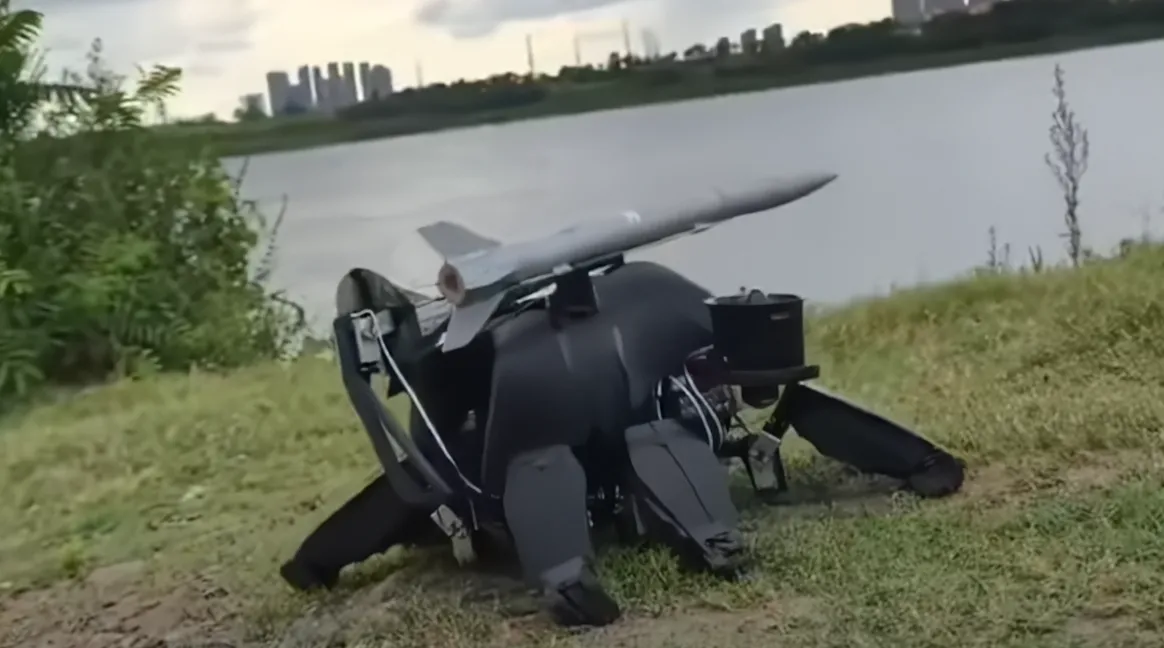This 3D‑Printed All‑Terrain Robot—not a government lab product but a scrappy, one‑maker marvel—just went viral. Imagine a six‑legged turtle‑like mech built in someone’s garage in China, trundling over rocks, paddling through a pond, then taking off into the air with a tri‑rotor lift. Seriously. I watched the clips (there’s no smoke and mirrors) and spoke with a mutual contact who saw the build notes. It’s 100% real, and it’s breathtaking to see a 3D‑Printed All‑Terrain Robot deliver such versatility from off‑the‑shelf hardware and pure grit.
What is a 3D Printed All Terrain Robot and How Does This Triphibious Robot Work?
You ask: what makes something an all terrain machine? For the Chinese maker, it means triphibious—land, sea, air. That is, a true Triphibious Robot. It morphs via mechanical morphing: wheels or legs for crawling, watertight hull and propellers for swimming, light tri rotor frame for flying. Most others are limited to two media; this one goes across all three.
Inside, nothing is opaque—stepper motors, brushless drone ESCs, off the shelf gyros. Printed mostly in nylon composites on a sub $500 FDM machine. Its controller? Arduino like, with open source flight firmware. That’s it. This is unfiltered DIY Robotics at its best.
How a One‑Maker Workshop in China Crafted a Multi‑Terrain Robot
No corporate R&D. No clean room. Just a dirty bench, scavenged parts, and long nights. I saw the garage kind of. And by “I saw,” I mean footage from a Bilibili livestream so yes, this is very much a Maker Community China thing.
Their space looks like XinCheJian in Shanghai: messy tables, laser cutters buzzing, but importantly—a community culture that accepts 3D Printing and innovation outside of big labs. This guy tapped into that. The robot’s body is made from printed panels and fiberglass rods. Embedded logic is RFID triggered “modes”—walk, swim, fly. No fluff. All instincts.
That’s what’s great—it’s the spirit of grassroots robotics innovation that’s spreading through these maker hubs. Top-down robotics policy, meet bottom-up imagination.
Why This Feels Like a Robotics Breakthrough 2025 and Not Just for Hobbyists
Shifting from cute to consequential requires context. China’s robotics sector is under extraordinary pressure—and support—to deliver scale, affordability, and utility. At last year’s World Robot Conference, firms displayed soft robotic arms built with 3D‑printed plastics that cost a tenth of conventional versions. For Beijing, robotics isn’t just tech; it’s “new productive forces,” national upgrade, and a global contest. In that light, a lone tinkerer building a 3D‑Printed All‑Terrain Robot capable of doing what industrial rigs can’t without massive budgets—is a real turning point. Especially when the result looks plausible enough to inspire autonomous robotics beyond what standardized arms can do.
A recent arXiv paper on Triphibian Robot design (from a university team) analyzed morphing cylindrical bodies, transition mechanisms, and actuator trade‑offs—yet looked bulky, theoretical. Our turtle‑bot scaled elegant, cheap, and practical.
Risks… How Could This Multi-Terrain Robot Be Abused?
Yes, there’s a flip side. In economic times, analysts pointed out the robot’s ability to fire missile-style projectiles as an example of how DIY could turn into autonomous weapons. With AI targeting, GPS navigation, even swarm logic, a low-cost Triphibious Robot becomes a hybrid tool. Not conspiracy – that’s just engineering extrapolation. The genie is out of the bottle.
So what are the tough questions: Should researchers in Autonomous Robotics start thinking about “maker weapons”? Or do we double down on norms and open licensing? Hard to say. The world just made IRL more important.
What Comes Next? Maker Community China and Future Frontiers in DIY Robotics
There’s a bigger picture here—Chinese Robotics Innovation isn’t always about corporate logos or military labs. It’s coming from backstreet workshops powered by zero cost software and 3D filament.
We’ll soon see clones: a city scale drone that dives into canals, lands on rooftops, then delivers supplies. Or environmental bots that sample rivers, crawl over terrain, then ascend to perimeter sensors. All built with 3D Printing Technology and guided by community forums and video tutorials.
But two things need to happen:
- The maker movement needs best practice building guides. I would love to see a “secure your craft” wiki for hazard prevention.)
- Policy frameworks need to engage—not just ban. How does a triphibious drone qualify under export controls, or airspace laws?
The All Terrain Robot category is no longer one dimensional. It now includes amphibious and aerial capabilities too. And the more these robots are made in Shenzhen workshops the more this is a structural shift rather than just a cool hack.
In Conclusion: The 3D‑Printed All‑Terrain Robot Is More Than a Gimmick
To be blunt: the scaling possibilities are dazzling. You’ve got a hacker who skipped factory costs and produced a functioning 3D‑Printed All‑Terrain Robot that others could copy within weeks. That’s critical mass.
The innovation lies not just in what it can do, but in how cheaply the maker did it. And it does all three domains. That’s why this is a bona‑fide Robotics Breakthrough 2025 in both maker spaces and innovation policy discussions.
If you’ve gotten this far, you probably agree: this is not just news. It’s a question for the community. Do you see this becoming a mainstream DIY platform—or a slippery slope? Drop your thoughts below. Would love to hear if you’d build one (for peaceful use, of course), or what governance measures you think might help.
In the end, the 3D‑Printed All‑Terrain Robot shows that when makers get smart and scales shrink, transformation happens—not with governments or labs, but with filament and imagination.
What do you think? Share your opinion and join the debate in the comments.












Leave a Reply
You must be logged in to post a comment.